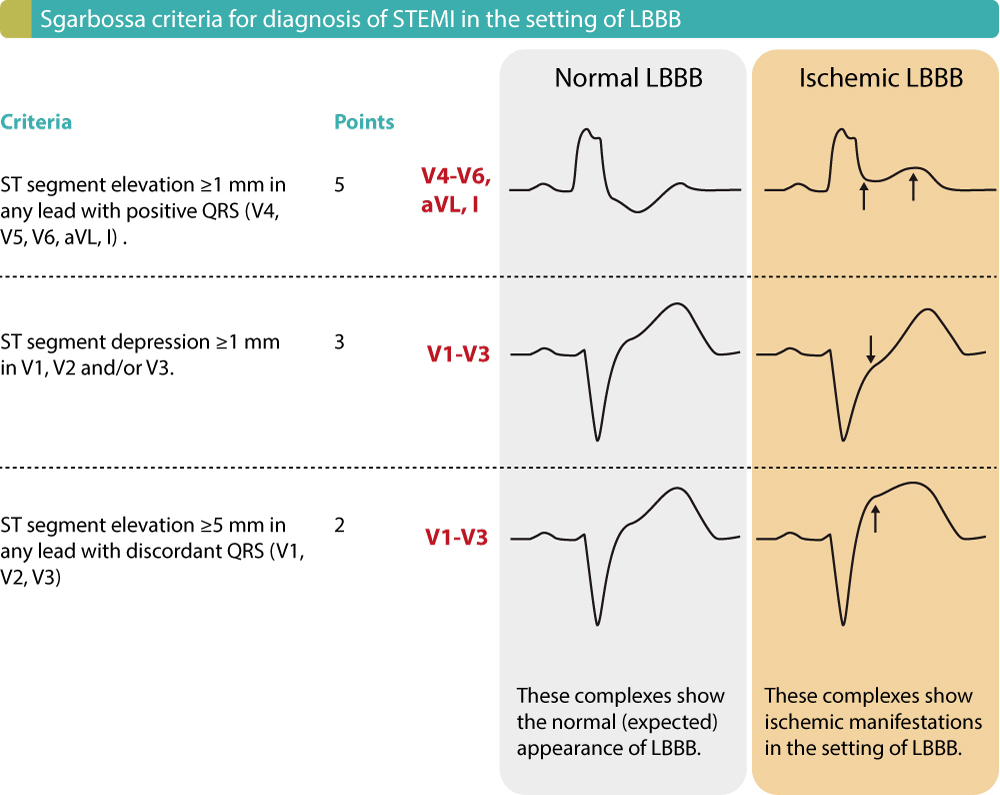
STEMI (ST Elevation Myocardial Infarction) diagnosis, criteria, ECG & management ECG & ECHO
In STEMI/STE-ACS, on the other hand, reciprocal ST segment depressions are typical and there may be T-wave inversions in the same leads showing ST segment elevation. T-wave inversion may, however, occur in perimyocarditis, but only after normalization of the ST segment elevations (i.e these two ECG changes do not occur simultaneously).

Evolution of Acute STEMI NCLEX Quiz
ECG (EKG) in acute STEMI (ST Elevation Myocardial Infarction) The ECG is the key to diagnosing STEMI. ECG criteria for STEMI are not used in the presence of left bundle branch block or left ventricular hypertrophy (LVH) because these conditions cause secondary ST-T changes which may mask or simulate ischemic ST-T changes. ST segment elevation is measured in the J-point and the elevation must.

Pin on Study your PANCE off
Why is it called a STEMI? Myocardial infarction is the medical term for a heart attack. An infarction is a blockage of blood flow to the myocardium, the heart muscle. That blockage causes the heart muscle to die. A STEMI is a myocardial infarction that causes a distinct pattern on an electrocardiogram (abbreviated either as ECG or EKG).
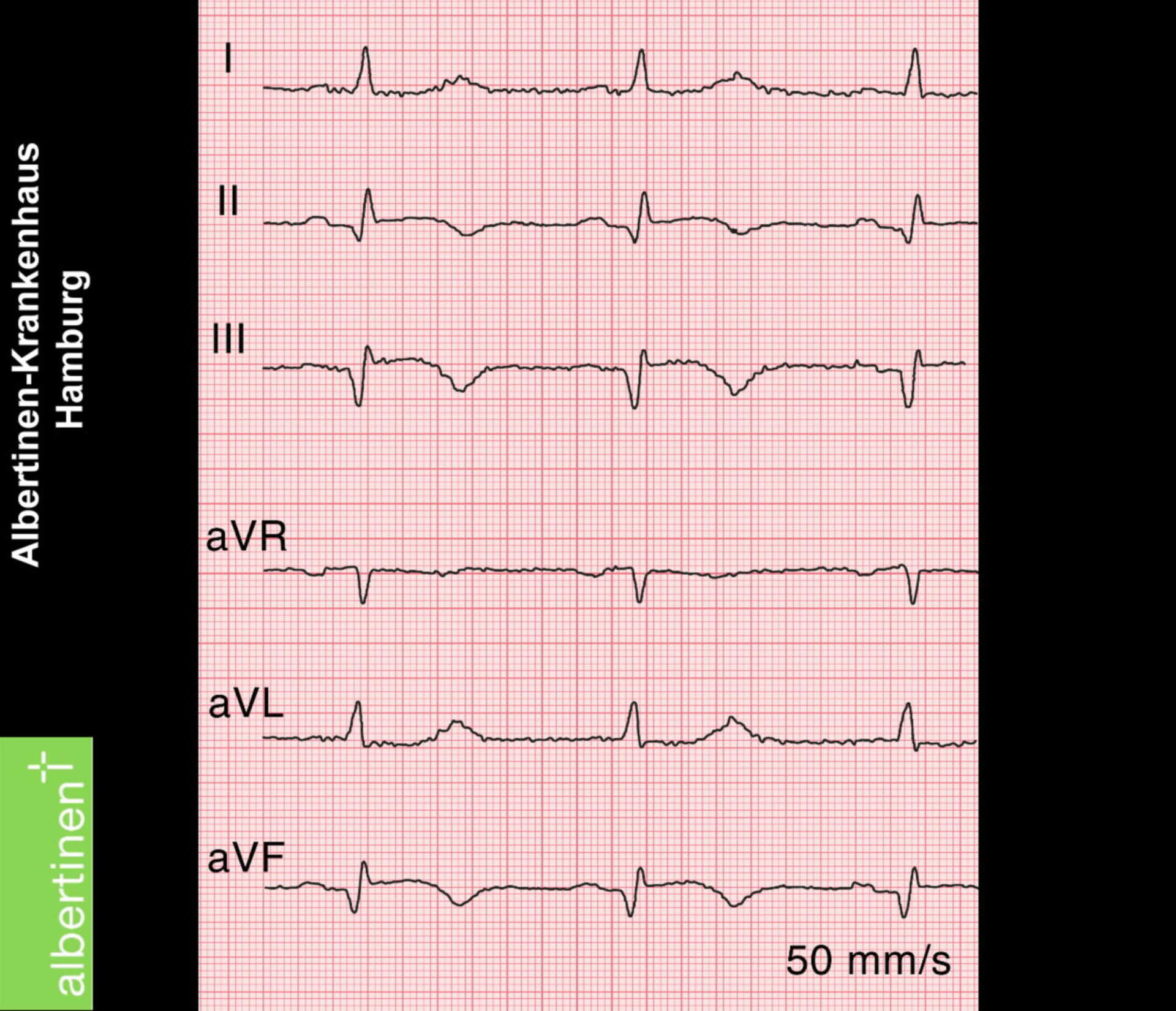
Stadio intermedio posteriore STEMI (ECG) DocCheck
Consideration of typical EKG patterns in STEMI and STEMI mimickers. STEMI -EKG CRITERIA. •Diagnostic elevation (in absence of LVH and LBBB) defined as: - New ST elevation at J point in at least 2 contiguous leads -in leads V2-V3, men >2mm, women > 1.5mm -in other chest leads or limb leads, > 1mm. Alternative causes of ST-T changes.

Stemi Adalah Penyakit Homecare24
An acute ST-elevation myocardial infarction (STEMI) is an event in which transmural myocardial ischemia results in myocardial injury or necrosis.[1] The current 2018 clinical definition of myocardial infarction (MI) requires the confirmation of the myocardial ischemic injury with abnormal cardiac biomarkers.[2] It is a clinical syndrome involving myocardial ischemia, EKG changes and chest pain.

STEMI (ST Elevation Myocardial Infarction) diagnosis, criteria, ECG & management ECG learning
Infark miokard akut (IMA) masih merupakan salah satu penyebab kematian tertinggi di unit gawat darurat. Selama infark miokard akut yang disertai dengan ST elevasi (STEMI), elektrokardiogram (EKG) biasanya mengikuti perkembangan perubahan, dimulai dengan gelombang T hiperakut dan memuncak dengan elevasi segmen ST; gelombang Q patologis dapat muncul lebih awal dan/atau terlambat dalam prosesnya.

Mastering STEMI ECG
A 12-lead ECG should be interpreted immediately (within 10 minutes) at first medical contact. ECG monitoring should start immediately and a defibrillator must be ready. Consider connecting leads V7, V8 and V9 in patients with high suspicion of posterior acute myocardial infarction (e.g due to reciprocal ST-segment depressions in V1, V2, V3).
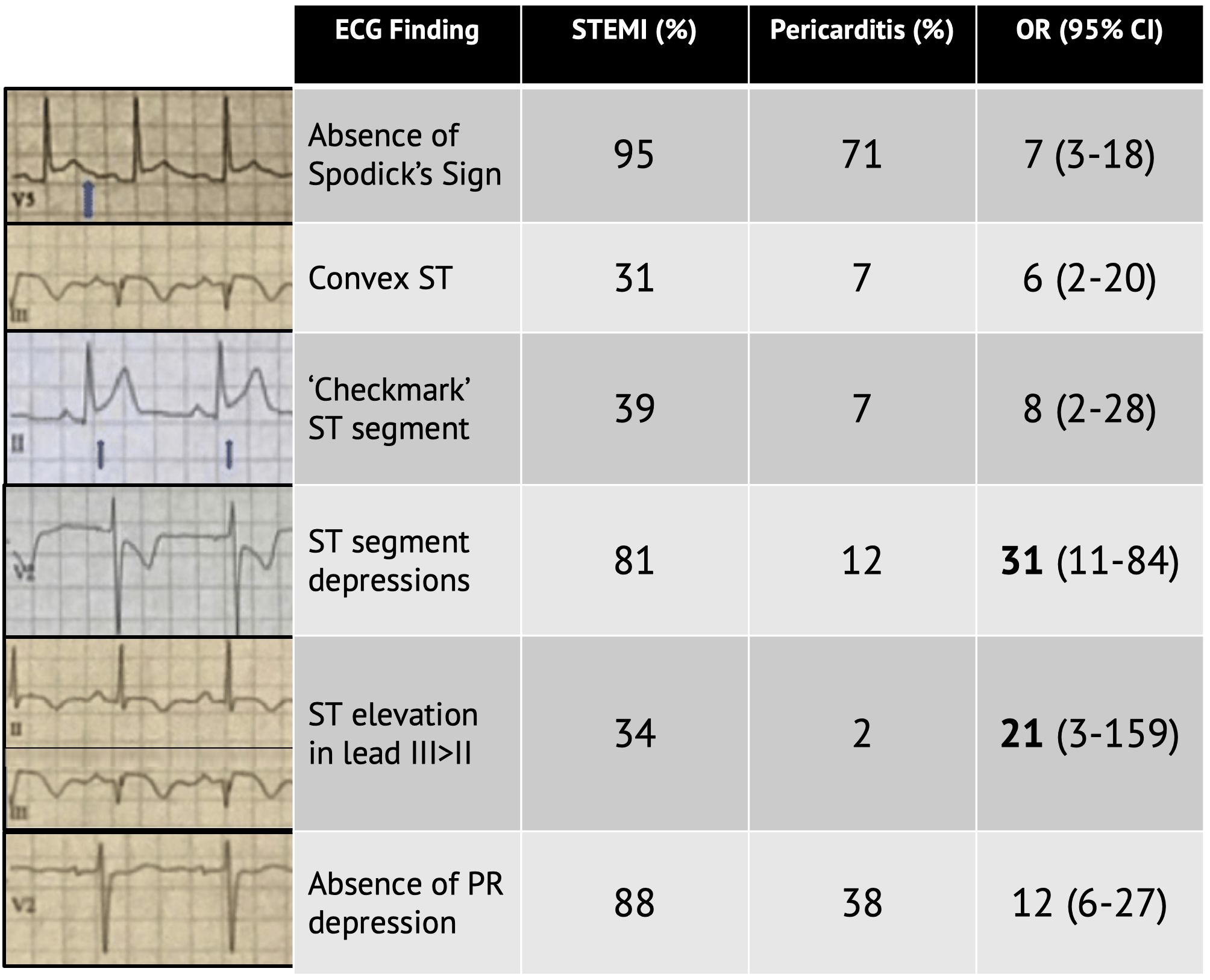
Differentiating STEMI from Pericarditis LaptrinhX / News
Specifically, In patients with STEMI, the presence and magnitude of microvascular obstruction was associated with the occurrence of mayor adverse cardiovascular events (adjusted HR 3.74 [95% CI 2.21-6.34]; P < 0.001). 47 Combining first pass myocardial perfusion and DE-MRI is also a unique means to visualize in one study session infarct size.

Mastering STEMI ECG
Transcript. The evolution of a STEMI: even though ischaemia is the first thing that happens, it's not the first change that you will see on the ECG. On a normal ECG, the ST segment is on the baseline. As soon as a patient is experiencing a myocardial infarction, the ST segment will elevate within minutes. For this reason, you will not see the T.
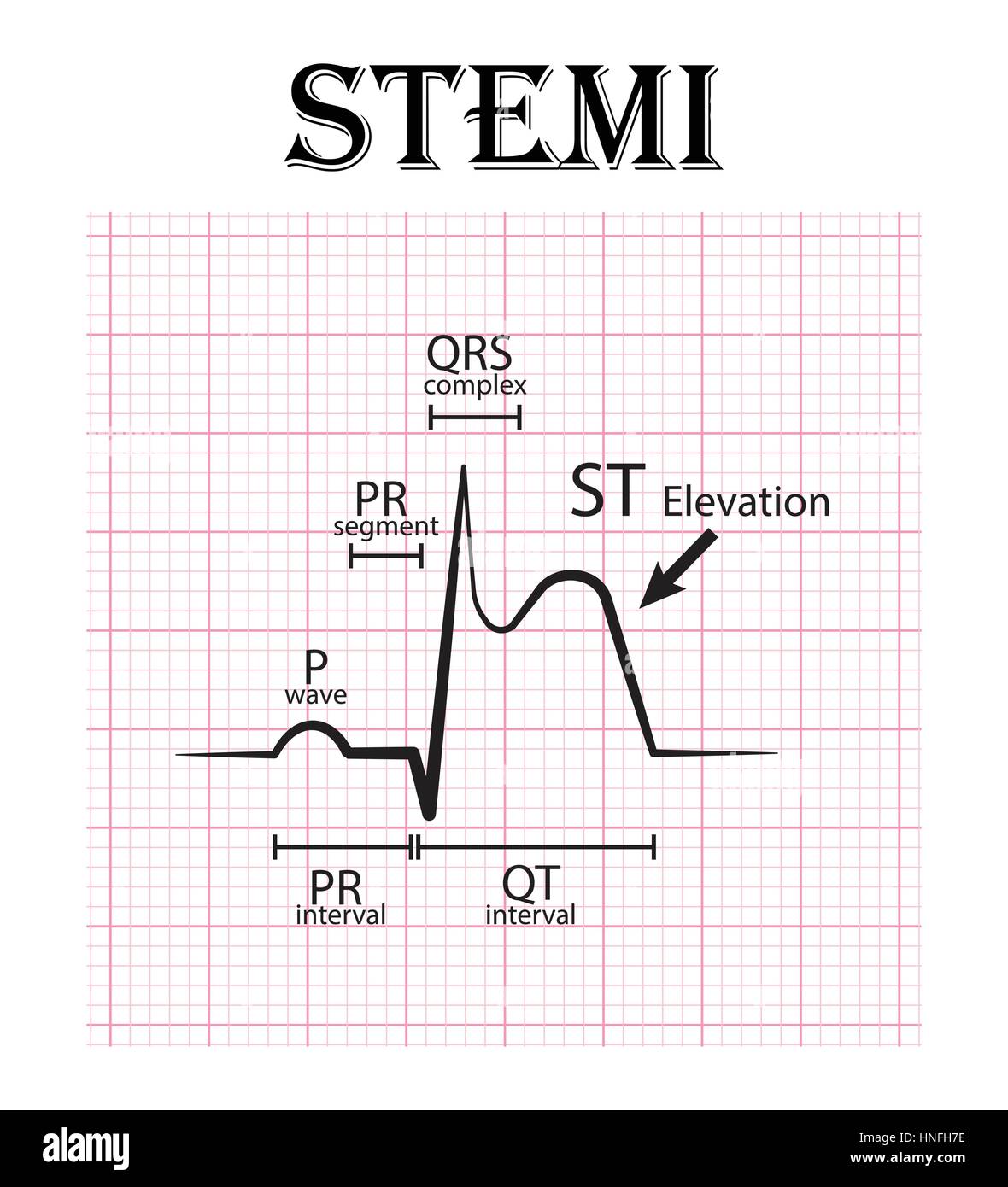
ECG of ST elevation myocardial infarction ( STEMI ) and detail of ECG ( P wave , PR segment , PR
The ECG criteria for STEMI diagnosis was based on the European Society of Cardiology/ACCF/AHA/World Heart Federation Task Force for the Universal Definition of Myocardial Infarction as a new ST elevation at the J point in at least two contiguous leads of ≥2 mm (0.2 mV) in men or ≥ 1.5 mm (0.15 mV) in women in leads V2-V3 and/or of ≥1 mm.
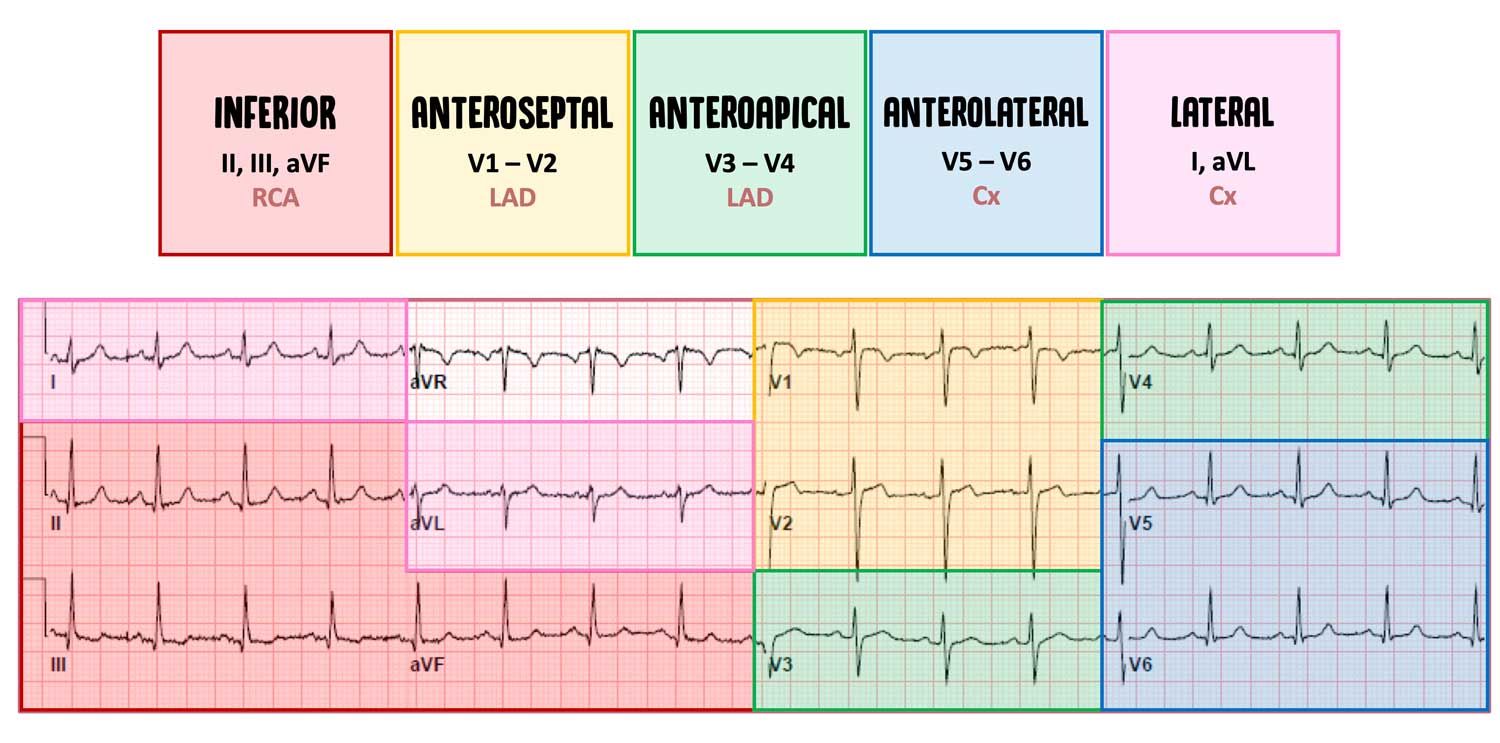
STEMI & NSTEMI A Nurse's Comprehensive Guide Health And Willness
1. First, an AI algorithm was developed to accurately identify a STEMI among 12‑lead ECGs; 2. Second, an AI algorithm was developed to correctly detect a STEMI by analyzing single‑lead ECGs; 3. Third, the data was analyzed to identify the best single lead for STEMI recognition and compared against the 12‑lead ECG model results; 4. Fourth.

HD ECG Course ST Elevation (Part 1) EMRAP
E-mail: [email protected]. ST-elevation myocardial infarction (STEMI) is a clinical syndrome defined by characteristic symptoms of myocardial ischemia in association with persistent electrocardiographic ST elevation (STE) and subsequent release of biomarkers of myocardial necrosis. 1 STE is the single best immediately available surrogate marker.
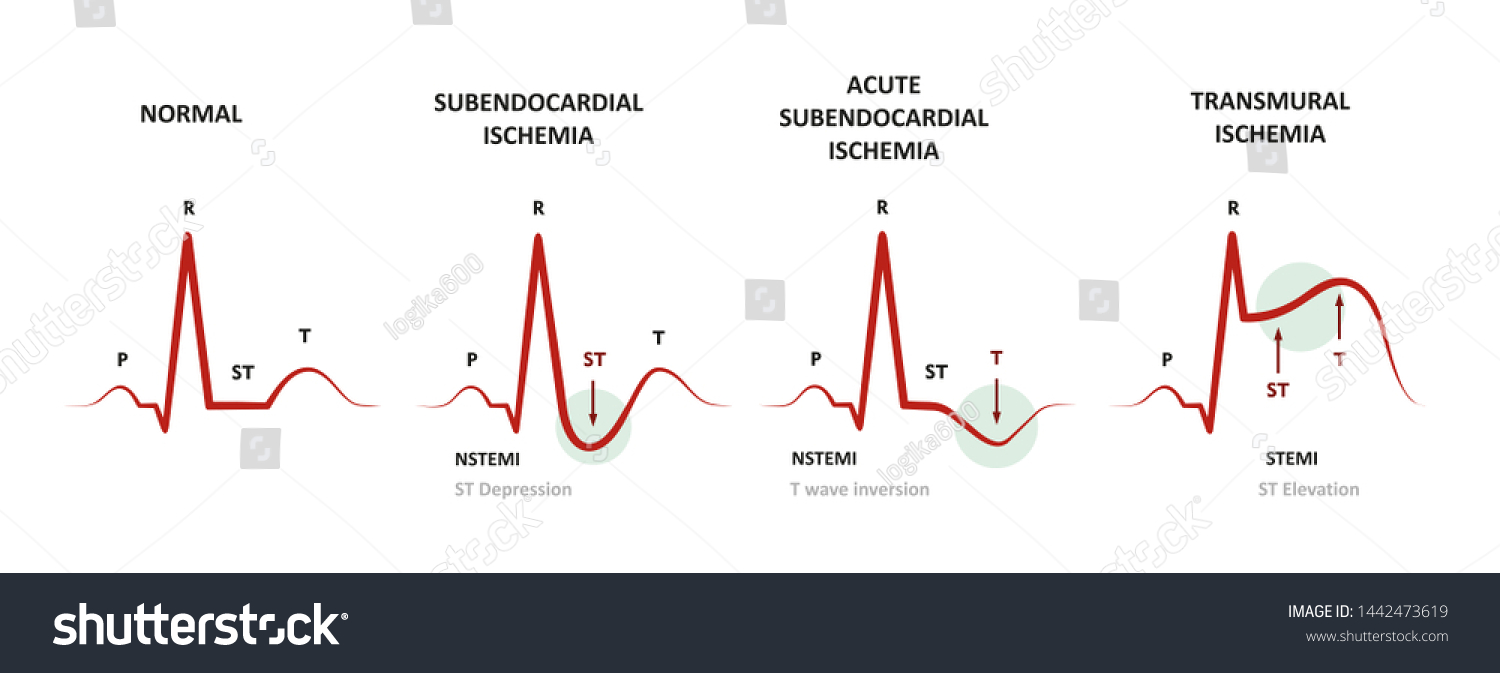
Diagnosis Myocardial Ischemia Nstemi Stemi Ekg Ilustrație de stoc 1442473619
Myocardial Ischaemia. Ed Burns and Mike Cadogan. Mar 16, 2022. Home ECG Library. This page covers the ECG signs of myocardial ischaemia seen with non-ST-elevation acute coronary syndromes (NSTEACS). ST-elevation and Q-wave myocardial infarction patterns are covered elsewhere: LMCA occlusion, Anterior STEMI, Lateral STEMI, Inferior STEMI, Right.
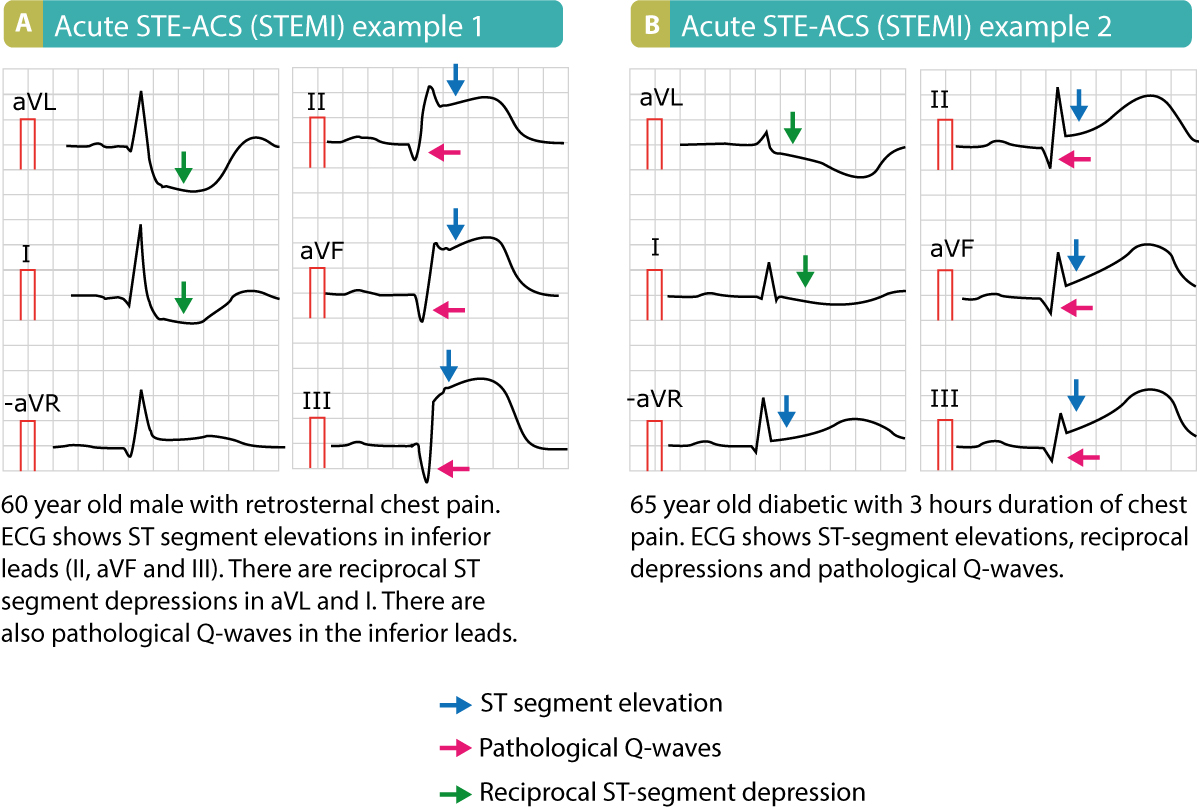
STEMI (ST Elevation Myocardial Infarction) diagnosis, criteria, ECG & management ECG & ECHO
Background: While ST-Elevation Myocardial Infarction (STEMI) door-to-balloon times are often below 90 min, symptom to door times remain long at 2.5-h, due at least in part to a delay in diagnosis. Objectives: To develop and validate a machine learning-guided algorithm which uses a single‑lead electrocardiogram (ECG) for STEMI detection to speed diagnosis.

STEMI Equivalents on ECG • Conventional STEMI Elevation GrepMed
Kata Kunci: EKG, Evolusi, STEMI, TAVB ABSTRACT The electrocardiogram (ECG) modality is important for diagnosis and determining the course of ST-segment elevation myocardial infarction (STEMI). In STEMI there is an evolution or change in the ECG that indicates the course of the infarction. Without therapeutic intervention, the

STEMI and equivalent ECG Quiz
Anterior myocardial infarction carries the poorest prognosis of all infarct locations, due to the larger area of myocardium infarct size. A study comparing outcomes from anterior and inferior infarctions (STEMI + NSTEMI) found that compared with inferior MI, patients with anterior MI had higher incidences of: In-hospital mortality (11.9 vs 2.8%)